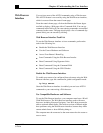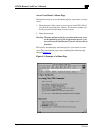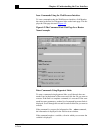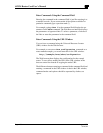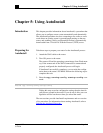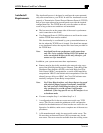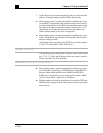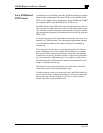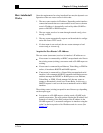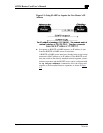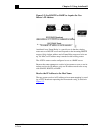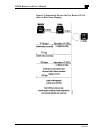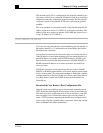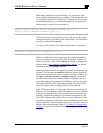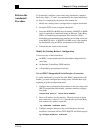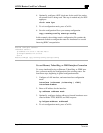
Chapter 5: Using AutoInstall
August 1997 Page 5-5
2524UM
How AutoInstall
Works
Once the requirements for using AutoInstall are met, the dynamic con-
figuration of the new router occurs in this order:
1. The new router acquires its IP address. Depending on the interface
connection between the two routers and/or access servers, the new
router's IP address is dynamically resolved by either SLARP re-
quests or BOOTP or RARP requests.
2. The new router resolves its name through network-confg, cisco-
net.cfg, or DNS.
3. The new router automatically requests and downloads its configu-
ration file from a TFTP server.
4. If a host name is not resolved, the new router attempts to load
router-confg or ciscortr.cfg.
Acquire the New Router's IP Address
The new router (newrouter) resolves its interface's IP addresses as:
z
If newrouter is connected by an HDLC-encapsulated serial line to
the existing router (existing), newrouter sends a SLARP request to
existing.
z
If newrouter is connected by an Ethernet, Token Ring, or FDDI in-
terface, it broadcasts BOOTP and RARP requests.
z
If newrouter is connected by a Frame Relay-encapsulated serial
interface, it first attempts the HDLC automatic installation process
and then attempts the BOOTP or RARP process over Ethernet,
Token Ring, or FDDI. If both attempts fail, the new router at-
tempts to automatically install over Frame Relay. In this case, a
BOOTP request is sent over the lowest numbered serial or HSSI
interface.
The existing router (existing) responds in one of these ways depending
on the request type:
z
In response to a SLARP request, existing sends a SLARP reply
packet to
newrouter. The reply packet contains the IP address and
netmask of
existing. If the host portion of the IP address in the
SLARP response is 1, newrouter configures its interface using the
value 2 as the host portion of its IP address and vice versa. (See
Figure 5-1
.)



